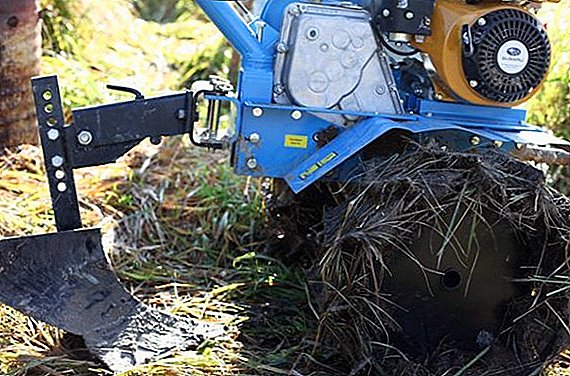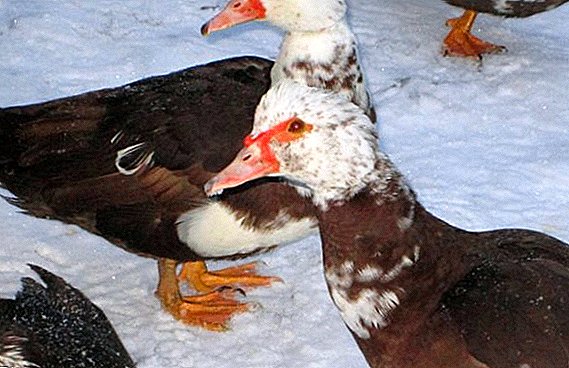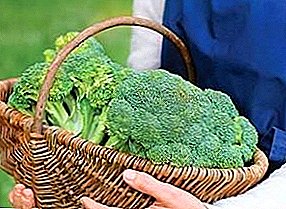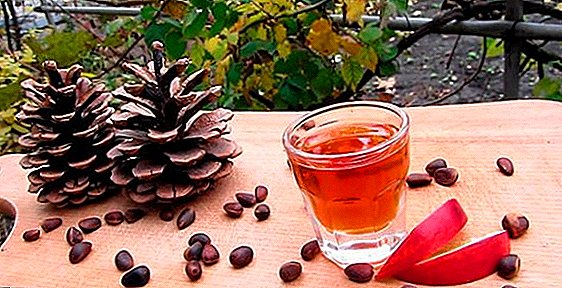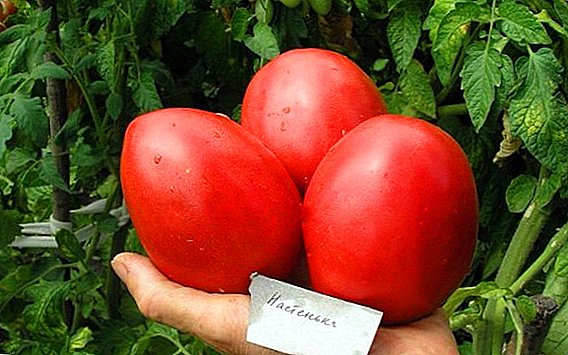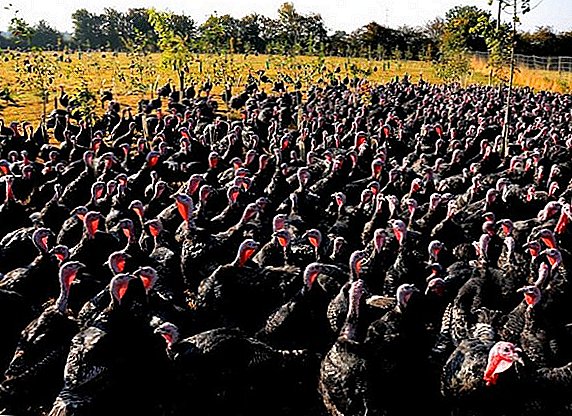 The demand for turkey meat is only growing, as it is tasty and dietary. The owners of individual farms began to pay more and more attention to the breeding of these poultry for themselves and for sale. In this case, priority is given to breeds and crosses of the meat direction.
The demand for turkey meat is only growing, as it is tasty and dietary. The owners of individual farms began to pay more and more attention to the breeding of these poultry for themselves and for sale. In this case, priority is given to breeds and crosses of the meat direction.
Let's take a look at how to grow turkeys for meat and whether this is a profitable business.
Is it beneficial to keep turkeys for meat
Turkey meat has a high taste and is included in various diets, baby food. Therefore, it is increasingly willing to buy, although it is more expensive than chicken.
Turkeys do not grow as fast as chickens, but they gain much more weight. Of course, the young birds of these poultry are more expensive and more money goes to feed, however, the payback is quite considerable. According to reviews of amateur poultry farmers, the profit is approximately 50-70%.

Of course, in the conditions of an individual farm, containing only 20-30 heads, you will not get rich, but you will receive a guaranteed income. At the same time it is good to look for the wholesale seller of compound feeds and to purchase from it directly, without intermediaries.
It should be noted that in the presence of walking, the performance indicators of this bird are higher. In addition to walking, you should also take care of the premises for maintenance, equip it, vaccinate the chicks.
Familiarize yourself with home turkey breeds, broiler turkey breeds.
At the farmstead of a private house or cottage for five months, you can grow a couple of birds, spending only on their purchase and nutrition of chicks, and then feed more grown-up individuals with garbage and fodder grown by themselves, inexpensive millet, practically without spending on maintenance. Of course, the performance will not be as high as when using balanced feed, but the costs are minimized.
If you are going to seriously engage in the cultivation of turkeys for sale, then the most optimal will be the simultaneous cultivation of feed. And if you choose a well-established meat breed, then you yourself can grow young and not spend money on its purchase. In this case, an incubator should be purchased. Such a closed cycle will make your farm less dependent on price fluctuations and help you save well, increase profits, the more young you can sell to the side.

For the quickest payback, they usually use crosses - they are early on and quickly gain a lot of weight, but youngsters will have to buy and feed intensively all the time.
Important! It is very important to buy high-quality young meat from a well-established breeder, and not just buy some turkey poults on the market from unknown people. This is a purchase of "a cat in a bag." You can purchase not particularly productive chicks.
What kind of turkeys better to breed for meat
Now there is a large selection of breeds and crosses of turkeys of meat, and the owners of private farms can choose from the following:
- wide breasted white. Inside this breed there are three lines of productivity type - light (the male weighs up to 9 kg, and the female gains weight up to 6 kg), medium (respectively, 17 kg and 7 kg), heavy (25 kg and 10 kg). Meat yield is 68-70%;

- bronze wide chest. The average live weight of a male is 16 kg, while for females it is 9 kg. With the gutted carcass, the meat yield is up to 66%;
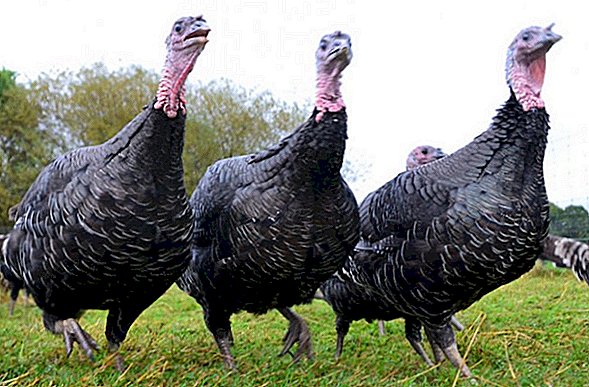
- Canadian wide breasted. At 20-23 weeks, turkeys weigh 13-14 kg, and turkeys gain weight up to 8 kg;
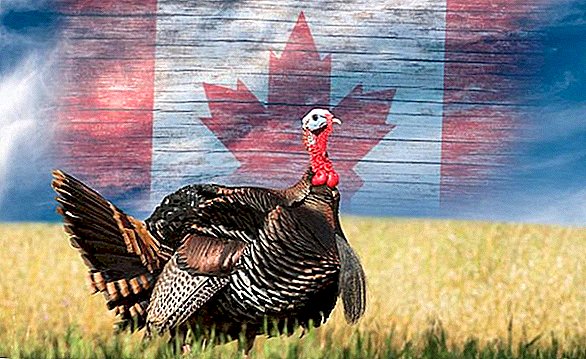
- Moscow bronze. Adult males reach 15–16 kg, while females reach 7–9 kg;

- BIG6. Turkeys of this productive cross-country gain weight of 22-25 kg, and turkeys reach 11 kg. The yield of pure meat in these broilers is high and amounts to about 80-85%;
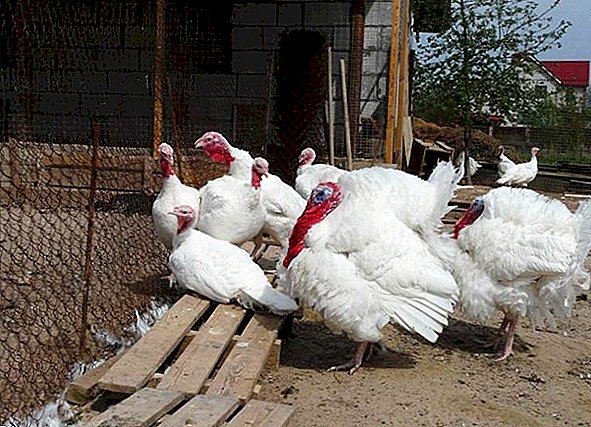
- highbreed converter. Males gain weight 20–22 kg, and females weigh 10–12 kg. The yield of meat from one carcass reaches 80-85%;
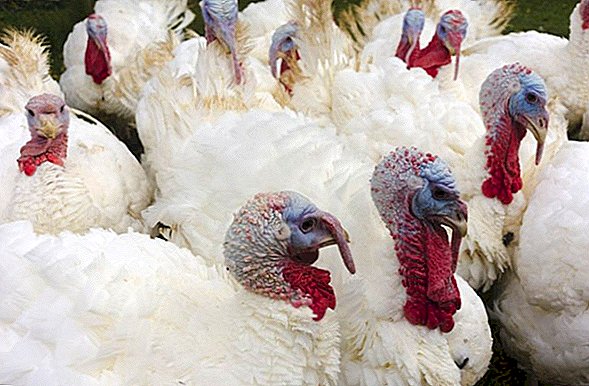
- Grade Maker. At five months, the average weight of males is about 19 kg, while females weigh almost 4.5 kg at 4.5 months;
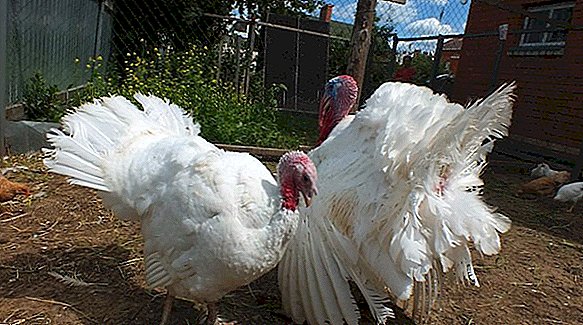
- BYuT8. Males weigh up to 27 kg, females reach 10 kg. Meat yield - about 83%.
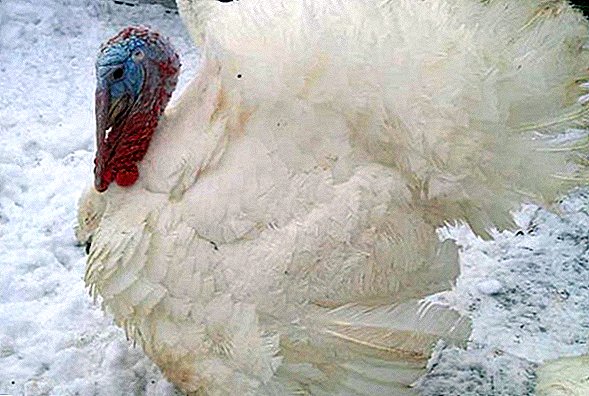
How many turkeys grow for meat
Killer age of poultry has an impact on the rate of return on investment. It depends on the breed and cross line, as well as on fattening. Usually turkey poults of light type are sold in 110-120 days, the average type is slaughtered in 150-160 days, and the heavy type of these birds is slaughtered in 200-210 days.
In industrial rearing turkeys are slaughtered before the age of 120 days, when they reach a weight of 4-4.5 kg. This takes into account that female individuals actively gain weight up to 150 days, and males - up to 180-200 days.
Did you know? It was also noted that with separate keeping on farms, males and females gain almost half a pound more live weight than individuals raised together. This also saves feed.
Rules for fattening turkeys for meat at home
The weight gain of birds in the meat direction depends on the intensity of feeding and diet. 
Daily ration
At home, the daily diet of poults and turkeys is recommended to be based on the following proportions:
- millet, corn, oats or wheat grain - 65%;
- sunflower seed meal - 12%;
- yeast - 5%;
- limestone - 5%;
- fish meal - 3%;
- chalk - 3%;
- chopped grass - 5%;
- meat and bone meal - 1%;
- salt - 1%.
Learn how to feed daily turkey poults, grown turkeys and turkeys in the winter.
This diet is better absorbed by the bird than industrial feed with the use of chemical additives.
The water for drinking should be fresh and regularly changed to avoid intestinal disorders.

For small turkey poults, special feed should be purchased or fed with the following feed:
- The first two weeks of babies can be fed with a mixture of crushed eggs and corn or wheat flour, bran. In this mixture, you should add greens, grated carrots, boiled millet. Of the greens, it is most useful to use chopped green onions. Such a mash can also be made on low-fat cottage cheese, it is also useful to add curdled milk or whey. From the age of a week, chalk or crushed shell can be added to this mash, and from the 11th day of life, bone meal;
- From day 15, they switch to food from crushed grain of cereals (60%), beans (25%), sunflower (2%) and chalk (up to 5%);
- from the age of one month, whole grains can be introduced into the diet;
- from two months they introduce corn kernels.
Learn how to grow turkey poults from the first days of life, what should be the temperature regime for turkeys, how to distinguish turkey poults by gender, what to do if turkeys peck at each other, how to breed "Furazolidone" for poults, why the turkeys are turning their legs, how much turkey weighs and adult turkey.
Feeding frequency
The frequency of feeding may vary depending on the age of the bird:
- up to 10 days of life chicks are fed up to 8-9 times a day, gradually reducing the frequency of feeding and increasing the time between meals;
- at the age of 30 days, the poults eat 6 times a day;
- after reaching 2 months, babies are fed 4 times a day;
- adults eat three times a day in winter and four times in summer.

Use of feed
Turkeys can be fed with domestic feed, and can be of industrial value. Not everyone likes to fool with cooking homemade food, and then ready dry food comes to the rescue.
Production feed is made taking into account the age and direction of cultivation (for weight gain, increasing egg production). Such feeds reduce labor costs, but hit the price, as they are not cheap.
Did you know? Turkey meat is more tender and tasty than males. Turkey meat has lower cholesterol than other poultry or red meat. Due to the low content of purines, it is a dietary and healthy product. Turkey meat is an excellent source of vitamins of group B, PP, phosphorus and selenium, involved in metabolic processes and the formation of immunity.
An important point is the selection of high-quality feed for turkeys.
The following starting feeds are well suited for kids:
- for newborn turkey poults - PK-11 or Purina 10050;
- for the age of 5-13 weeks - PK-11-2;
- for the age of 14-17 weeks - PK-12-1-14-17;
- for 15-30 weeks - P-13-1;
- for breeding stock - PK-14.
Starter feed: video
An adult individual eats 200-250 g of dry feed per day, and the males have a daily dose of about 100 g more.
To save money, you can make feed on your own.
Turkey feeding methods
During the fattening period, turkeys quickly gain weight. This procedure is carried out before slaughter. There are two main types of fattening.
Learn how to score a turkey properly, how to pluck a turkey at home.
Forced way
Forced fattening is to increase the amount of food for turkeys several times. When the bird stops eating because of sufficient satiety, it is force-fed, putting food in the goiter, but not overflowing it.
At first, the bird is restricted in movement or caged. Daily food intake during this period is 700-800 g. Feed is selected with a high content of proteins and fats.
For feeding by force, they use food that is soft in structure so as not to damage the digestive system — these are masses that roll into balls of crumbs.

These cobbles are prepared as follows: take corn and barley flour at 20%, wheat flour - 15%, bran - 15%, oat flour - 25%, salt - 1%, yeast - 5%. Everything is thoroughly mixed. 150 g of this mixture add 150 g of water and knead the dough.
When forced fattening turkey for 20 days can increase the speed of gain in weight by 2-2.5 times.
Fattening
When fattening self-made food, turkeys are taken on a voluntary basis. With this method of fattening, they continue walking the birds, especially recommending it to be carried out in the fields where the crop of sunflower, oats, wheat and other cereals, as well as melons and gourds, were harvested.
Birds are fed 2-3 times right on the run. Constantly provide fresh drink. With this method it is important to have large areas for grazing, but there is a saving in feed.
Learn the benefits of turkey meat, liver and eggs.
Conditions for growing turkeys for meat at home
For poultry it is necessary to create optimal conditions for the development and weight gain: equip housing and organize walking.
 Turkeys need not so much walking, as in grazing with a large amount of green mass
Turkeys need not so much walking, as in grazing with a large amount of green mass
Requirements for the room
To keep the turkeys it is necessary to equip the house. The accommodation for them should meet the following requirements:
- room area must meet the norm - 1 square. m for 2 adult birds;
- the room should be well ventilated or ventilated, fresh air should flow regularly, but it is worth considering that drafts are unacceptable;
- the floor of wood or concrete should be sprinkled with hay, sawdust and constantly monitor the cleanliness of the litter. It is completely changed in the spring and before the onset of winter frosts. On the eve of replacing the litter, the room is cleaned and the floor is sprinkled with lime for disinfection;
- temperature regime is set within + 10 ... 18 ° С;
- humidity in the room should be 65-70%. Indoors should not be damp;
- light day corresponds to 13 hours. Therefore, in winter, it is recommended to include electric lighting of about 3-5 W per 1 sq. M. m area of the house;
- front of feeding should meet the following standards: with a dry feed of 10 cm per individual, and with a combined - 20 cm;
- front of watering - about 3 cm per turkey.
Important! The productive quality of turkeys is adversely affected by the temperature regime greater than +18 ° C. The birds appear lethargy, greatly reduced appetite, egg production falls, and sometimes stops altogether. In addition, testicular fertility drops sharply.Feeders are placed in the house, which can be in the form of troughs or gutters. In height they are placed at the back of a turkey. But for the convenience of water tanks have at the level of the neck of birds.

In the warmest part of the room, roost is established, taking into account that about 35 cm of the perch should be per female. Under them for ease of cleaning put boxes or special shields for litter.
Nests are placed in more shaded areas of the room where the laying turkeys would feel more relaxed and safe. The number of nests placed at the rate of 1 nest for 4-5 turkeys.
Learn how to build a brooder for poults, turkey-hen, make roosts, feeders, drinkers.
Aviary for walking
Turkeys love free range and can run fast. And in some cases they can fly. Taking into account these features, when keeping turkeys, it is necessary to provide for the presence of a sufficiently spacious cage from a chain-link net if it is impossible to have a free range. Aviary equip at the rate of 20 square meters. m for one individual. It is recommended to sow plants suitable for these birds - alfalfa, clover, oats, peas, soybeans and others.
In winter, the aviary is cleared of snow and covered with straw. In the aviary place trough with food and containers with water. In the aviary set boxes with sand and ash in equal quantities, since the ash-sand baths are very useful for these birds.

The mesh fence must be at least two meters high. It will be very good if the exit to the aviary will be from the house with the help of Lazy. The dimensions of the manholes are usually 0.5 x 0.5 m and they are equipped with corresponding doors.
Growing turkeys in the garden is a profitable occupation, especially if there is a territory for walking. These birds can forage, which somewhat reduces the cost of their maintenance. Of course, you have to spend money on the purchase of young productive meat breeds and animal feed. The diet for turkey poults can also be made up of more inexpensive feeds and additives. If you are not sure that you can cope with a large population of turkeys, try to feed a couple of individuals in five months of a warm period and calculate your costs and income.
Breeding turkey crosses: video
Is it profitable to grow turkeys for meat: reviews
In Moscow, the price of young stock in spring was 250 rubles a bird, over the summer they grew to a decent size. By weight I do not know, but heavy. I would not say that they ate a lot, planting onions, however, they got a lot of them (for some reason they love green onions very much), and for cereals (wheat, corn, peas, etc.) - no, ducks / geese Eat more. They love boiled potatoes from the garden, cottage cheese is also respected, bread crumbs do not disdain. The only thing I think turkeys need where to walk-run-grass pinch. If you shove them into cramped rooms, they will die. And the price of cereals should be voiced?


I had them all, and if they like, even one of them, to issue a joyful morning cry about the dawn, then everyone supports this undertaking, well, as in the EP party, the Liberal Democratic Party and others.
Look out the window, if dawn is rattling there, then you and your whole family and all grateful neighbors are already awake, cursing everything. To shut the screamers impossible.
In this regard, the noise is ideal for chickens without a rooster, indouki or spines and broilers.
There is another problem with turkeys. This eagle poultry loves to climb high and fly. And this eagle can fly away. Therefore, it is necessary to close the pen net from the top.
If there is walking, then good, if not, then the turkey's appetite is striking.
Turkey meat on the fan. It is practically fat free, dietary. If the turkey has outgrown or ran a lot, then its meat is like a sole.
Watching the movies, we shoved the carcass in the oven and tried to cook there. But there were such that they did not fit into the oven, roosters, and those that climbed, turkeys, prepared for a long time and were inferior in all qualities to ducks and broilers.
По стоимости индюшатина дороже бройлеров и уток.
В общем птица на любителя.












